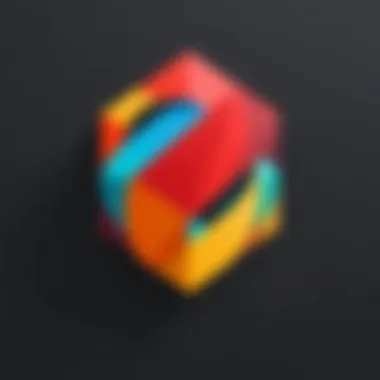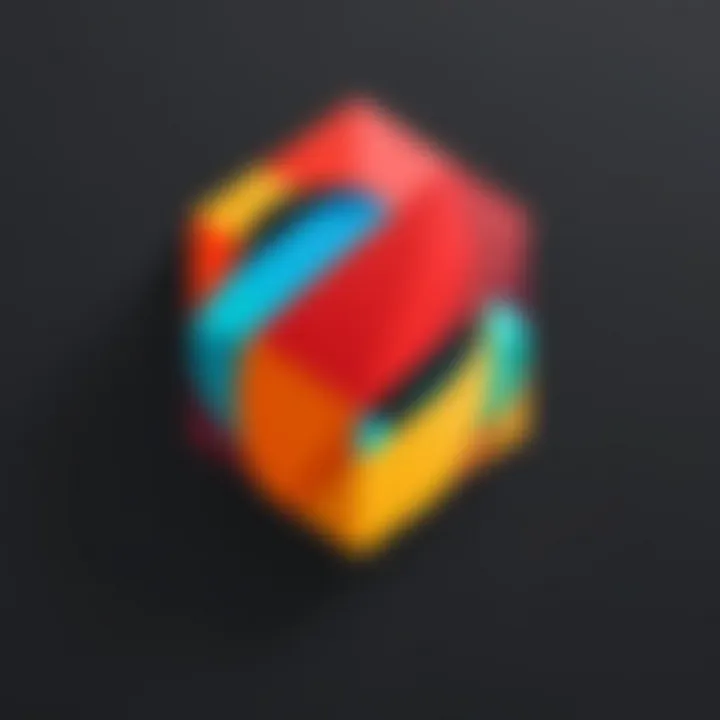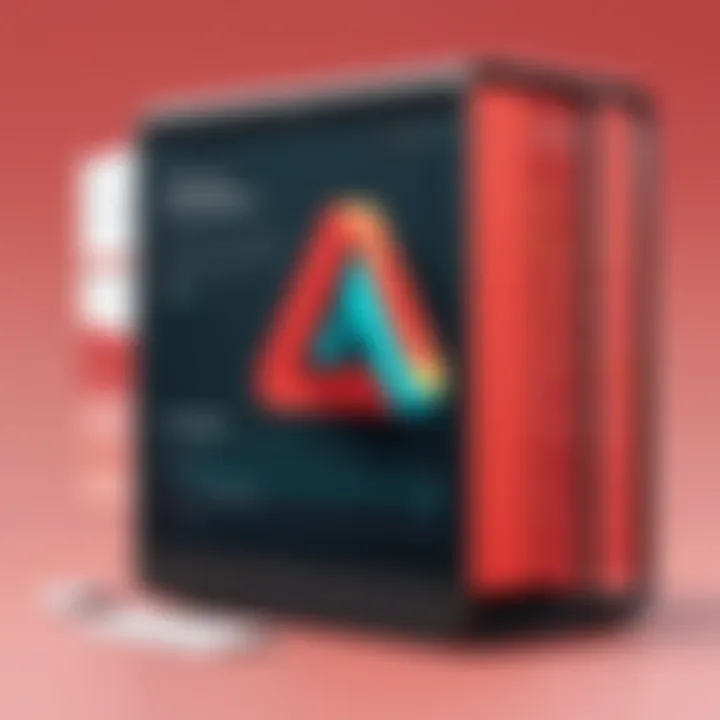Integrating Slack with Todoist: Enhance Your Workflow


Intro
In a world where efficiency is key, the integration of productivity tools such as Slack and Todoist stands out as an effective solution. Both platforms serve unique purposes within the workflow of individuals and organizations. Slack facilitates seamless communication among team members, while Todoist helps manage tasks and projects. When used together, they enhance overall productivity and streamline processes. In this article, we shall dive into the features of each tool, the benefits of their integration, and the practical steps to set them up.
Overview of Core Features
Both Slack and Todoist come with robust functionalities that cater to the diverse needs of professionals. Understanding these core features is essential for leveraging their integration.
Description of Essential Functionalities
Slack:
- Real-time messaging that supports direct messages, channels, and file sharing.
- Integration with various apps like Google Drive and Zoom, enhancing collaboration.
- Customizable notifications to filter important communications.
Todoist:
- Task management that includes due dates, reminders, and prioritization options.
- Collaboration features allowing project sharing and progress tracking.
- Multi-platform support, making it accessible from mobile and web applications.
Comparison of Features Across Top Software Options
When comparing Slack and Todoist to other solutions like Microsoft Teams and Asana, the following points emerge:
- Slack vs. Microsoft Teams: While both offer messaging capabilities, Slack has a more user-friendly interface, whereas Teams integrates more tightly with the Office suite.
- Todoist vs. Asana: Todoist is best for straightforward task management, while Asana offers more comprehensive project tracking features but can be more complex to navigate.
The choice between these tools depends on specific needs, but the integration of Slack and Todoist combines the best of both worlds.
User Experience and Interface
Insights Into UI/UX Design Aspects
The user interface of both Slack and Todoist is designed with usability in mind. Slack presents an aesthetically pleasing layout that is easy to navigate, making communication fluid. Todoist utilizes a clean, minimalist approach that allows users to manage tasks without distractions.
Importance of Usability and Accessibility
Usability plays a crucial role in how effective these tools can be. A platform that is easy to use can lead to faster adoption and better overall satisfaction. Accessibility across multiple devices ensures that users can maintain productivity anytime and anywhere. This is especially pertinent for teams that work remotely or in diverse locations.
"Integrating Slack with Todoist is not merely about connecting two apps; it is about creating a cohesive workflow that enhances productivity."
The synergy created through this integration leads to efficient task management and timely communication, making it an invaluable strategy for decision-makers and professionals alike.
By understanding the core features and user experience of both platforms, users can take significant steps toward modernized productivity. The following sections will delve deeper into implementation tactics and potential challenges to navigate for a successful integration.
Preface to Slack and Todoist
In today's fast-paced work environment, effective communication and task management are crucial for success. Slack and Todoist are two tools that can significantly enhance these aspects of productivity. By understanding what these tools offer, organizations can streamline their processes and improve overall efficiency.
Overview of Slack
Slack is a messaging platform designed primarily for teams. Its core function is to facilitate communication through channels, which can be organized by project, department, or topic. This structure allows team members to engage in focused discussions without the need for endless email threads. Each channel can host various types of content, including text, images, and links to other resources, creating a dynamic workspace. Moreover, Slack supports integrations with numerous applications, making it a flexible hub for team collaboration.
One of the standout features of Slack is its search capability. Team members can easily locate past conversations, files, and comments, reducing the time spent hunting for information. The ability to customize notifications ensures that individuals stay updated on important discussions without feeling overwhelmed. Overall, Slack promotes transparency and engagement within teams, which can lead to improved morale and productivity.
Overview of Todoist
Todoist is a versatile task management application that caters to individuals and teams alike. It allows users to create tasks, set deadlines, and organize projects efficiently. The interface is simple yet powerful, enabling users to focus on their tasks without distractions. One key aspect of Todoist is its ability to categorize tasks using projects and labels. This function enhances organization, helping users distinguish personal tasks from professional ones easily.
Another notable feature is the priority system. Users can assign different priority levels to tasks, ensuring that urgent items receive the necessary attention. Todoist also tracks productivity trends, allowing users to view their achievements over time. This feature can motivate individuals to increase their output and manage their time better. By leveraging these functionalities, teams can maintain clarity and direction, ultimately streamlining their workflows.
Why Integrate Slack and Todoist
The integration of Slack and Todoist stands as an essential consideration for teams seeking to enhance their productivity and streamline their workflows. Both tools serve distinct purposes in the realm of productivity, yet their combined functionality can significantly amplify their effectiveness.
Enhancing Team Collaboration
A core benefit of integrating Slack and Todoist is the enhancement of team collaboration. Slack serves as a communication hub, allowing team members to engage in discussions, share files, and exchange information seamlessly. When integrated with Todoist, tasks can be easily shared across channels. This real-time access to tasks and projects ensures that every member is on the same page.
- Task assignments become visible across Slack channels, reducing the likelihood of misunderstanding responsibilities.
- Team members can comment on tasks directly within Slack, fostering a clearer dialogue about project statuses and expectations.
- Notifications related to task updates enhance visibility, keeping everyone informed about progress.
Moreover, the integration fosters a culture of accountability. When tasks are visible, individuals are more likely to take ownership of their responsibilities, leading to higher productivity levels.


Streamlining Task Management
The integration also plays a pivotal role in streamlining task management. Using Todoist within Slack allows users to manage their tasks without needing to switch between multiple applications. This can lead to increased efficiency in accomplishing work.
- Creating Tasks: Users can create Todoist tasks directly from Slack messages, ensuring critical items aren't overlooked amid conversations.
- Due Dates and Priorities: Setting and adjusting due dates, as well as defining task priorities straight from Slack, simplifies the management process.
- Tracking Progress: The ability to track and receive updates on tasks without leaving Slack keeps the user focused and reduces downtime.
By combining communication and task management functionalities, teams can develop a more cohesive workflow. The real-time interaction minimizes errors and delays in task follow-through, leading to more efficient project outcomes.
Key Features of Slack
Understanding the key features of Slack is crucial to maximizing the effectiveness of its integration with Todoist. Slack is designed to enhance communication and collaboration within teams. Its unique functionalities streamline processes and foster collective productivity, making it a valuable asset in any workplace.
Channel Management
Channel management is a foundational element of Slack. This feature enables teams to create specific channels for different projects, topics, or departments. By organizing conversations this way, teams can eliminate clutter and ensure relevant information is easily accessible. Each channel can have its own set of members, allowing for targeted discussions and reducing noise from unrelated conversations.
A practical application of channel management could be seen in a marketing team using channels for campaigns, updates, and general discussion. This arrangement leads to clearer communication lines and prevents information overload. It is essential for any team to use this feature effectively to maintain focus and enhance collaborative efficiency.
Integrations with Other Tools
Slack’s capacity for integrating with other tools sets it apart. Many organizations rely on numerous software solutions for productivity, from project management tools to customer support applications. Slack offers an extensive variety of integrations, including Todoist, which simplifies task management and enhances workflow.
The integrations enable seamless data flow between applications, allowing teams to operate without needing to switch between multiple tabs or platforms. With integration, tasks created in Todoist can appear directly in Slack, keeping teams on the same page. This functionality ensures that every team member is aware of their responsibilities and deadlines, reducing the chances of miscommunication.
Messaging and Communication Features
Messaging is the core function of Slack and is designed to facilitate effective communication. Features such as direct messaging, threaded conversations, and interactive polls offer versatility in how teams communicate. Direct messaging is especially beneficial for one-on-one interactions, while threaded conversations help keep discussions organized, ensuring that responses remain connected to the original message.
Slack also allows users to share files directly in chats, making it easier to collaborate on documents or projects in real-time. The ability to use emojis, reactions, and mentions enhances engagement and draws attention to critical messages. When paired with Todoist, these communication features allow teams to discuss tasks and projects without losing context, ultimately leading to better project outcomes.
"Incorporating Slack into your workflow increases transparency and reduces friction by ensuring everyone has access to the same information at all times."
By understanding and utilizing these key features of Slack, organizations can significantly improve their communication and collaboration efforts, making the integration with Todoist even more impactful.
Key Features of Todoist
An understanding of Todoist's key features is essential in leveraging the integration with Slack. The application is designed to enhance productivity, offering specific functionalities that are particularly beneficial when integrated with collaboration tools like Slack. One can maximize efficiency by clearly understanding these features, ensuring that tasks are not only set, but also managed and tracked efficiently.
Task Creation and Management
Task Creation and Management is a core feature of Todoist. This functionality allows users to easily add tasks, set due dates, and assign priorities. In the context of integration with Slack, this becomes crucial. Users can create tasks directly from their Slack conversations without switching apps. This seamless transition reduces friction in workflow and creates an environment where task assignment can occur spontaneously during discussions. Additionally, you can categorize tasks using labels and projects, which aids in keeping related tasks organized.
Benefits of Effective Task Management:
- Instant Accessibility: Create tasks on the go, directly from Slack messages.
- Adaptive Priorities: Assign priority levels to ensure critical tasks are prioritized.
- Integration Flow: Stay focused on conversations without losing track of new assignments.
Project Organization
Project Organization represents another important aspect of Todoist. The ability to classify tasks into distinct projects allows teams to maintain structure amidst a variety of responsibilities. When Slack integrates with Todoist, team members gain the ability to see how their tasks relate to larger project goals. This cohesion can significantly enhance collaboration and accountability within teams.
Setting up projects with folders, sections, and sub-projects can also be done intuitively. Teams can align on project timelines and components directly from Slack, updating their progress in real time.
Key Elements of Project Organization:
- Visual Clarity: Project views allow everyone to see task distributions.
- Role Clarity: Assign tasks to team members, specifying who is responsible for which part of a project.
- Milestones Tracking: Keep an eye on project milestones directly linked to Slack messages, ensuring all are on the same page.
Productivity Tracking
Productivity Tracking serves as a measure of how effectively tasks are being completed. Todoist provides users with tools to analyze their productivity patterns, making it easier to identify productivity peaks and troughs. With features like "Karma Points," Todoist incentivizes task completion, pushing teams to maintain their productivity over time.
When integrated with Slack, tracking progress becomes a shared experience. Team members can celebrate completed projects or tasks, fostering a culture of support and productivity.
Advantages of Productivity Tracking in Integration:
- Performance Insights: Analyze tasks completed and patterns over time.
- Motivation Boosting: Encourage friendly competition through achievements linked in Slack.
- Focused Reviews: Use daily or weekly reviews in Slack to discuss productivity stats.
In summary, Todoist’s strengths in task creation, project organization, and productivity tracking are enhanced through integration with Slack. This leads to a streamlined workflow that supports team dynamics.
Setting Up the Integration
Integrating Slack with Todoist is a crucial step for enhancing productivity within teams. This integration allows users to manage tasks seamlessly while communicating effectively. Understanding how to set up this integration makes a significant difference in workflow efficiency. Proper setup can lead to a smoother interaction between task management and team communication, benefiting every member of the organization.


Connecting Slack and Todoist
Connecting Slack and Todoist involves a few straightforward steps. First, you must have accounts on both platforms. After logging into your Slack account, navigate to the Slack App Directory. Search for the Todoist app and click on it. You will find an option to install the app. Once clicked, you'll be prompted to authorize the integration.
Here’s a brief breakdown of the steps:
- Open Slack and go to the App Directory.
- Search for Todoist and select it.
- Click on "Install" and authorize the necessary permissions.
After completing these steps, you should see Todoist integrated into your Slack workspace, enabling direct interaction.
Configuring Notifications
Once the integration is complete, configuring notifications becomes essential. Notifications help keep team members informed about tasks without needing to switch between apps disruptively.
In Todoist, navigate to the integration settings and select user preferences for notifications. This includes task updates, reminders, and completion notifications. Users can customize the frequency and type of alerts they receive from Todoist to Slack. Consider the following points:
- Task reminders: Ensure team members receive timely updates on upcoming deadlines.
- Completion alerts: Inform the team when tasks are marked as complete.
- Custom notifications: Create reminders based on project needs or individual preferences.
Assigning Tasks from Slack
Assigning tasks directly from Slack to Todoist enhances efficiency. The process is simple and effective, reducing the chances of overlooking important tasks.
To assign a task, use the command followed by your task description. For example, typing will create a task in Todoist. This method ensures that tasks are created without leaving the communication platform. A quick checklist includes:
- Use clear descriptions: Make sure task details are specific and actionable.
- Utilize due dates: Incorporate due dates within the command to set deadlines upfront.
- Mention team members: If applicable, tag colleagues who need to be aware of the task then assign them as responsible.
In summary, properly setting up the integration between Slack and Todoist significantly contributes to improving productivity and streamlining teamwork. By following these steps, teams can achieve a more organized workflow, ensuring that vital tasks are managed efficiently.
Use Cases for Integration
Integrating Slack with Todoist enhances productivity in varied contexts. The combination of these two powerful tools allows users to centralize their workflow, improve communication, and maintain task visibility across teams. This section explores practical use cases where integration proves exceptionally beneficial, highlighting key elements and considerations.
Project Management Scenarios
In project management, clear communication and effective task allocation are paramount. Integrating Slack with Todoist simplifies these aspects significantly. Teams can create tasks directly from Slack messages, allowing for seamless transition of ideas into actionable items. This reduces the friction usually present in manual task creation. For instance, suppose a team discusses a new marketing campaign in a Slack channel. A member can quickly draft tasks, such as "Create Social Media Content" or "Prepare Presentation Slides", directly in Todoist by using a specific command.
Moreover, integration ensures that all team members are aligned on project timelines. Updates in Todoist can trigger notifications in Slack, keeping everyone informed on deadlines and changes. This combination helps prevent miscommunication, which can lead to project delays and confusion.
Consider the following benefits of using this integration in project management:
- Immediate Task Creation: Turn discussions into tasks instantly.
- Real-time Updates: Keep all members updated on project progress.
- Accountability: Assign tasks to specific individuals within Slack.
Team Collaboration Examples
Effective team collaboration requires tools that enhance both visibility and accountability. The integration of Slack with Todoist meets these requirements, fostering an environment where tasks are easily tracked and communicated.
In collaborative settings, team members can share feedback directly in Slack. When someone works on a task, they can notify the team using a simple command. This can be particularly useful in creative processes, such as brainstorming sessions or content creation tasks. For example, if a designer shares a draft in Slack, all team members can comment and suggest changes, which the designer can then incorporate into Todoist as new tasks.
Using Slack and Todoist together allows teams to:
- Discuss Tasks in Context: Opinions and ideas can be shared directly related to tasks.
- Enhance Transparency: Everyone sees what tasks are being handled and by whom.
- Facilitate Quick Decisions: Speedy resolutions and next steps can be established through direct communication.
"Integrating tools like Slack and Todoist transforms the way teams interact and work on projects. It bridges communication gaps and aligns objectives efficiently."
Incorporating these practical use cases illustrates how the integration of Slack and Todoist not only streamlines workflows but also ensures accountability, making it indispensable for successful project management and teamwork.
Potential Challenges
When integrating Slack with Todoist, recognizing potential challenges is crucial. These challenges may hinder the effectiveness of the integration and impact overall productivity. Understanding these obstacles helps users prepare and implement solutions effectively. Here, we will explore technical limitations and user adoption issues, providing insights that can aid your integration journey.
Technical Limitations
Technical limitations can arise from various sources. While both Slack and Todoist offer robust APIs for integration, inconsistencies in functionality may surface. Users might encounter issues such as delayed notifications or synchronization problems. For instance, if tasks created in Todoist do not promptly reflect in Slack, it may lead to confusion about task status, jeopardizing deadlines.
Moreover, compatibility issues among different versions of software can create complications. It is vital to ensure both platforms are updated to their latest versions for optimal performance. In addition, internet connectivity plays a pivotal role; any interruptions can disrupt the seamless operation of the integration.
Regularly monitoring system requirements and connectivity can help mitigate technical challenges.
User Adoption Issues
User adoption is another significant challenge when integrating these two platforms. Teams might resist adapting to new workflows, especially if they are accustomed to existing processes. This reluctance can stem from several factors, including lack of understanding or inadequate training.


To alleviate these issues, organizations should invest time in training sessions. A clear communication plan outlining the benefits of integration strengthens user acceptance. Encouragement from leadership can also play a vital role in fostering a positive attitude towards adoption.
Additionally, addressing feedback from team members can enhance their experience. Engaging with users about their concerns allows for adjustments to be made, ensuring a smoother transition. By combining technical support with effective change management, the likelihood of successful user adoption increases significantly.
Best Practices for Effective Use
Implementing Slack and Todoist together can significantly boost productivity if done correctly. Understanding best practices is crucial in maximizing the benefits of this integration. These guidelines not only enhance efficiency but also ensure clear communication and task management for teams.
Creating Clear Task Descriptions
Clarity in task descriptions is essential for effective task management. When users create tasks in Todoist from Slack, they should ensure that each task description is straightforward and unambiguous. This involves using simple language and avoiding jargon that may cause confusion.
- Be Specific: Clearly define what needs to be accomplished. Instead of saying "Work on project," specify "Draft the initial report for the marketing project."
- Add Context: If necessary, include relevant context to help team members understand the importance of the task. For instance, adding a due date or linking to a discussion in Slack can provide necessary background.
- Use Actionable Language: Start task descriptions with verbs. Phrases like "Create," "Review," or "Send" can clarify what actions are to be taken.
By consistently applying these principles, teams can reduce misunderstandings and improve the overall workflow. Clear task descriptions ensure that everyone is on the same page, which is critical in a collaborative environment.
Regularly Reviewing Tasks
Regular reviews of tasks in Todoist are vital for maintaining productivity and accountability. It is essential for teams to make reviewing tasks a routine practice, as this allows for timely updates and adjustments to ongoing projects.
- Set a Schedule: Teams should consider establishing a regular schedule for task reviews. This could be weekly or twice a month, depending on workload. Regular intervals help in gauging progress without becoming overwhelming.
- Collaborate on Reviews: Use Slack to facilitate review meetings. Discussing tasks in a channel or during a video call can bring different perspectives and encourage team members to share insights on task progress or roadblocks.
- Adjust Priorities: As tasks are reviewed, team members may need to shift priorities based on new information or changing deadlines. Adapting to these changes is more manageable when tasks are frequently evaluated.
Regular task reviews foster an agile work environment. They encourage proactive behavior and show commitment to project success.
By embedding these best practices into daily operations, teams can derive greater value from the Slack and Todoist integration. Clear task descriptions and regular reviews create a structured framework that effectively supports team productivity.
User Experiences and Feedback
In any integration, understanding user experiences and obtaining feedback is crucial. This section serves as an essential part of our discussion, highlighting how real-world application shapes the effectiveness of integrating Slack and Todoist. By focusing on specific elements, we can elucidate the benefits and considerations that users encounter when employing these two tools in tandem.
User experiences offer insights into how well the integration meets their needs. They can reveal both strengths and weaknesses in the synergy between Slack and Todoist. Feedback from users not only encompasses functionality but also addresses usability, ease of setup, and the support available during the integration process. Therefore, gathering user sentiments is not just about statistical data but about understanding the qualitative aspects of these tools.
Case Studies
Case studies provide real-world examples that demonstrate the impact of integrating Slack and Todoist. Several organizations have utilized this integration to enhance collaboration and task management significantly. For instance, a marketing team at a tech company transformed their project workflow by connecting Slack with Todoist. Communication issues were common before, as task assignments often got lost in email threads.
Once the integration was in place, team members could create tasks directly from Slack messages. This capability allowed them to refer back to discussions and convert important points into actionable tasks. Such case studies highlight practical benefits, showcasing improved efficiency and streamlined communication.
Another case study involved a software development firm that utilized the integration to manage sprints effectively. Developers could update task statuses through Slack, which kept everyone informed about progress. This level of visibility fostered accountability and boosted team morale. In both examples, the use of Slack and Todoist together produced measurable improvements in productivity and team synergy.
General User Sentiments
General user sentiments play a significant role in assessing the integration's overall acceptance. Many users appreciate the seamless nature of transferring information between Slack and Todoist. The ability to capture tasks on-the-go promotes a sense of control over projects and deadlines.
However, some users have expressed challenges regarding the setup process. While many report an easy experience, a minority has faced technical issues, especially with customizing notifications. This divergence in sentiment emphasizes the need for detailed support documentation.
Moreover, user feedback has often pointed to the importance of regular updates. Users expect ongoing improvements and fixes to enhance the integration.
To sum up, user experiences and feedback are integral to understanding the real effects of integrating Slack and Todoist. The analyze of case studies provides demonstrative evidence of positive outcomes, while grasping general user sentiments helps in recognizing areas for enhancement. This meticulous approach ensures that decision-makers can better evaluate the potential of this integration within their organizations.
Culmination and Future Perspectives
As we conclude this examination of integrating Slack with Todoist, it is essential to reflect on the significance of this integration in the realm of productivity and collaboration. The union of these two robust tools not only enhances personal workflow but also propels team efficiency to new heights. By enabling seamless communication alongside structured task management, organizations can foster environments where creativity and productivity thrive. The benefits of streamlining operations are critical for decision-makers and IT professionals seeking to optimize resources and time.
The Evolution of Task Management Tools
Task management tools have witnessed a profound evolution over the years. Initially, these tools served as simple lists where users could jot down tasks. However, as workplaces have become increasingly dynamic and interconnected, task management solutions have transformed into multifaceted platforms that offer various functionalities. For instance, the advent of collaborative features, like those found in Slack and Todoist, introduced a new dimension to task management.
The integration of real-time communication with task management systems is a prime example. Users can now assign tasks directly from conversations in Slack, facilitating immediate responses on task statuses.
Key elements in this evolution include:
- Enhanced collaboration features
- Integration capabilities with various applications
- Automation of repetitive tasks
- Real-time updates and notifications
These developments not only improve operational flow but also align team objectives closely with company goals. Thus, organizations can keep pace with a fast-evolving landscape by adopting these modern tools effectively.
Anticipated Trends in Integrations
Looking ahead, the landscape of tool integrations is poised for further transformation. Several trends can be anticipated in the near future that may reshape how integrations like that of Slack and Todoist operate.
One significant trend is the increasing focus on artificial intelligence (AI) and machine learning. These technologies facilitate smarter integrations by enabling predictive task management, offering insights based on past behavior. For example, an integrated system may suggest optimal deadlines or prioritize tasks based on user workload.
Another trend to watch is the rise of cross-platform integrations. Users now seek solutions that connect various applications beyond Slack and Todoist. This push is driven by the desire for seamless data flow and comprehensive analytics across platforms. Organizations might benefit from tools that aggregate data from multiple sources, presenting a consolidated view of productivity metrics.
Moreover, security and compliance considerations are expected to take center stage. As more tools integrate, safeguarding sensitive information becomes crucial. Solutions that prioritize user privacy, data protection, and secure integrations will likely gain traction.
The overall future of integrations between task management and communication tools looks promising. As organizations continue to value efficiency and collaboration, adapting to these trends will become paramount for maintaining competitive advantage.



